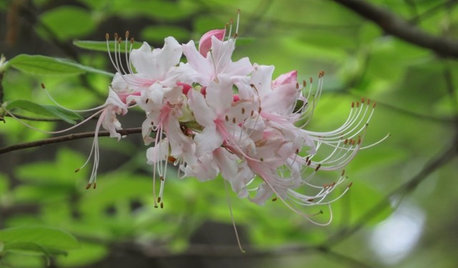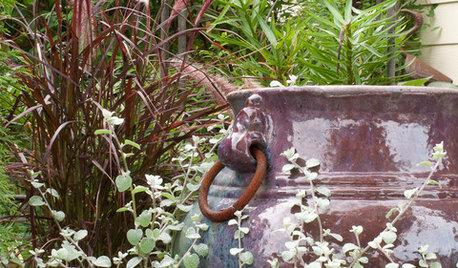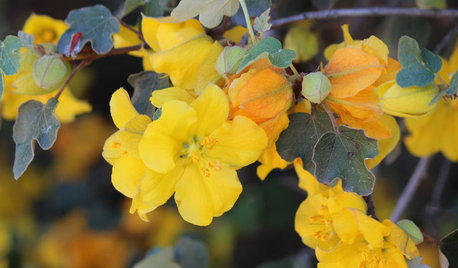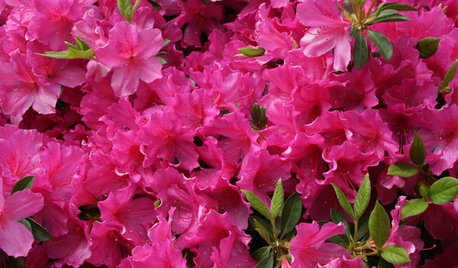Will a Rhododendron or Azalea Survive in...
afbq
13 years ago
Related Stories

GARDENING GUIDESGreat Design Plant: Rhododendron Canescens
Have a damp, shady spot in your garden that needs a lift? This Southern U.S. native may be the solution
Full Story
GARDENING GUIDESHave Acidic Soil in Your Yard? Learn to Love Gardening Anyway
Look to acid-loving plants, like conifers and rhododendrons, to help your low-pH garden thrive
Full Story
PLANTING IDEASGreat Garden Combo: Silver Sparkles Amid Purple and Blue Foliage
Get the look of this modern foundation planting by focusing on a restrained color palette with tasteful accents
Full Story
GARDENING GUIDES10 Top Native Plants for the U.S. Southeast
For a low-maintenance and wildlife-friendly landscape, use Southern natives that withstand heat and humidity
Full Story
CALIFORNIA GARDENINGCalifornia Gardener's May Checklist
Only one major chore but a plethora of planting possibilities means a delightful month in California gardens
Full Story
SOUTHEAST GARDENINGSoutheast Gardener's April Checklist
Stock up on herbs, keep clippers away from the daffodils and watch for signs of a major impatiens threat
Full Story
EARTH DAYHow to Help Your Town’s Beneficial Birds and Bugs
Make a habitat using local materials to provide a home to the creatures that help our gardens
Full Story
LANDSCAPE DESIGNFind Yourself in an Epic Garden in the Shade
Feeling hot and tired gardening in the sun? The world of shade gardening beckons you to its cool mystery
Full Story
GARDENING GUIDESBackyard Birds: Invite Entertaining Hummingbirds Into Your Garden
Hummingbirds — unique to the Americas — zip through open landscapes seasonally or year-round. Here’s how to attract them
Full Story
GARDENING GUIDESTop 12 Summer-Blooming Perennials for Deer-Resistant Drama
Can you have garden color, fragrance and exciting foliage with hungry deer afoot? These beauties say yes
Full Story





mainegrower
afbqOriginal Author
Related Professionals
70037 Landscape Architects & Landscape Designers · Cary Landscape Architects & Landscape Designers · Seabrook Landscape Architects & Landscape Designers · Finneytown Landscape Architects & Landscape Designers · Salem Landscape Contractors · Woburn Landscape Contractors · Bethel Park Landscape Contractors · Bowie Landscape Contractors · Lewisville Landscape Contractors · Pleasant Hill Landscape Contractors · Vermilion Landscape Contractors · Hawaiian Gardens Landscape Contractors · Ansonia Landscape Contractors · Castaic Gardeners & Lawn Care · Pike Creek Valley Gardeners & Lawn Carerhodyman
botann
rhodyman
carolinamary